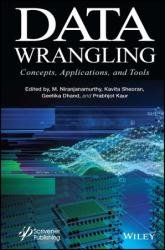 Название
Название: Data Wrangling: Concepts, Applications and Tools
Автор: M. Niranjanamurthy, Kavita Sheoran, Geetika Dhand
Издательство: Wiley-Scrivener
Год: 2023
Страниц: 357
Язык: английский
Формат: pdf (true)
Размер: 130.3 MB
Data Wrangling written and edited by some of the world’s top experts in the field, this exciting new volume provides state-of-the-art research and latest technological breakthroughs in data wrangling, its theoretical concepts, practical applications, and tools for solving everyday problems. Data wrangling is the process of cleaning and unifying messy and complex data sets for easy access and analysis. This process typically includes manually converting and mapping data from one raw form into another format to allow for more convenient consumption and organization of the data. Data wrangling is increasingly ubiquitous at today’s top firms. Data cleaning focuses on removing inaccurate data from your data set whereas data wrangling focuses on transforming the data’s format, typically by converting “raw” data into another format more suitable for use. Data wrangling is a necessary component of any business. Knowing Python programming has become one of the most basic and crucial tasks to be able to enter the field of data science, machine learning and general software development. But at the same time, due to the presence of other languages, like R, MATLAB, SAS, it certainly draws a lot of comparisons too.